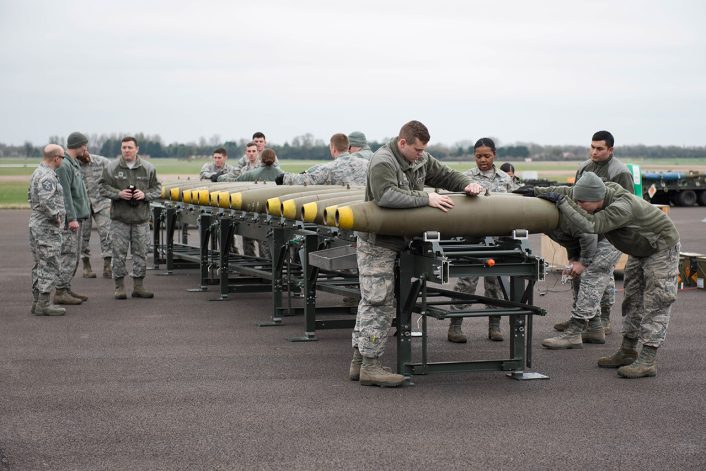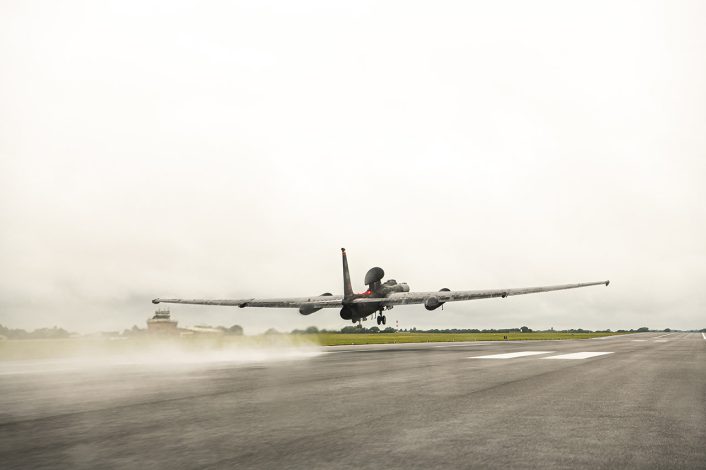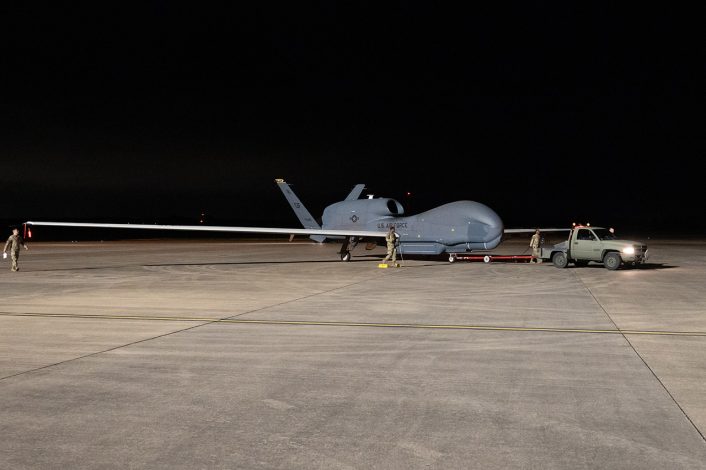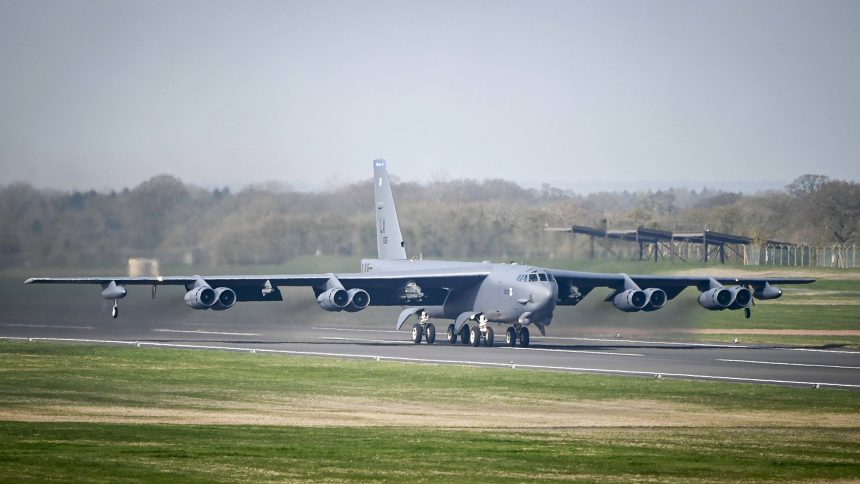A U.S. Air Force press release has confirmed the next Bomber Task Force deployment to Europe will begin in the coming days, most likely to RAF Fairford, UK.
Bomber Task Force (BTF) deployments have been a staple of each year’s calendar since 2018, seeing B-52, B-1 and B-2 aircraft deploying to locations across the world to gain experience operating in unfamiliar locations, and provide opportunities to train alongside allied forces.
While the deployment location and type of bomber was not specified by the official press release, the announcement coincides with movements of cargo aircraft to RAF Fairford from Barksdale Air Force Base, Louisiana. Barksdale is home to the 2nd Bomb Wing’s B-52H Stratofortresses. It should be noted however that some previous BTFs have seen mixed deployments of aircraft from multiple bases. In this case, aircraft could also come from Minot AFB in North Dakota.
The first support aircraft to arrive was N710CK, a Boeing 747 of Kalitta Air. The aircraft arrived from Barksdale AFB just before 1100 UTC on Nov 1, 2024. Kalitta Air is a regular contractor for the U.S. Department of Defense. This 747 was followed by U.S. Air Force C-17 09-9212, which arrived as ‘REACH 138’ at 1250 UTC from Joint Base Charleston.
Kalitta Air 747 into #RAFFairford from Barksdale AFB this morning. https://t.co/DdDSPeJCst pic.twitter.com/OCmyMvm2J2
— Saint1 (@Saint1Mil) November 1, 2024
A B-52 deployment to Fairford would be the second such deployment of 2024, following BTF 24-3 in June. RAF Fairford, an airbase in Gloucestershire, UK, operated by the U.S. Air Force, is one of the most common BTF locations. Throughout the rest of the year, save for the Royal International Air Tattoo each July, the base’s main movements are those of the based U-2s of the 99th Expeditionary Reconnaissance Squadron.
According to the U.S. Air Force, the upcoming European deployment will see the strategic bombers operate alongside NATO allies and partners over the course of several weeks. Previous BTF exercises in Europe have seen bombers conduct long range sorties as far as the Middle East and Africa as well as more local operations over Northern and Eastern Europe. Occasionally, they will coincide with and join wider exercises like BALTOPS.
Swedish AF #flygvapnet @Saab #Gripens and @Luftforsvaret @LockheedMartin F-35s escorted @AFGlobalStrike B-52s over Scandinavia this morning. The B-52s dropped bombs on the Vidsel range in Sweden as part of a Global Power mission before landing in the UK. Pictures from SwAF pic.twitter.com/WLZAyWdwJx
— Tony Osborne (@Rotorfocus) August 18, 2022
After departing the U.S. the Air Force says the deploying bombers will fly “a pre-filed flight plan through international airspace and with the appropriate diplomatic clearances in place for times when aircraft are transiting through a sovereign nation’s airspace”. This suggests that rather than taking a direct route to the deployment base the bombers will conduct a Global Power Mission type sortie enroute, which has been a regular feature of European deployments.
RAF Fairford
Though it officially remains a Royal Air Force station, RAF Fairford is operated by the 501st Combat Support Wing of the U.S. Air Force. It is the only designated strategic bomber forward operating location in Europe and hosted bombers flying combat missions in the 1991 Gulf War, 1999 Kosovo War, and 2003 Iraq War.
Though other locations in Europe can and have hosted bombers under the regular BTF deployments, RAF Fairford is specifically outfitted for sustained bomber operations. Dedicated hangars for the B-2 Spirit, which requires carefully controlled conditions to maintain its radar absorbent material, were constructed in the early 2000s. The base is only around 30 miles by road from RAF Welford, the second largest ammunition storage facility operated by the U.S. Air Force in Europe, ensuring the base can access a steady supply of weapon stocks.

Since 2019 Fairford has hosted a permanent detachment of U-2 Dragon Lady reconnaissance aircraft. Although the airfield was no stranger to this type, having seen regular stopovers by U-2s transiting to and from operating locations in southern Europe and the Middle East, this was the first time they had been permanently stationed at RAF Fairford since 1996. Most days see at least one U-2 departure in the early morning, arriving back in the afternoon or evening. Spectators at some of the Royal International Air Tattoo airshows since 2019 have been lucky to spot some of these arrivals during the event.
Official comments on the U-2’s operations from Fairford are scarce, limited mainly to acknowledging their presence and commenting that they “fly one or two sorties a day, roughly 20 sorties a month”. Local spotters are often advised to refrain from posting photographs or information regarding the U-2’s daily flights until they return. While the flights can be tracked by adversaries using radar, more likely to be of concern is the exact sensor payload outfitted to the U-2 on that specific day.

Aviation enthusiasts have been able to track some portions of the U-2 detachments’ daily sorties using a combination of radio monitoring and Mode A tracking, and information gleaned from these sources suggests, as many have theorized, that most flights head either into Eastern Europe or further north towards the Barents Sea.
With the U-2’s upcoming planned retirement, Fairford has undergone construction works and regulatory work to prepare for the future operation of unmanned aircraft. August 2024 saw the first ever landing of an RQ-4 Global Hawk at the base.

With the Global Hawk also set for retirement from U.S. Air Force service by the end of the decade, rather than preparing for this specific type in the long term it would seem more likely that RAF Fairford is being set up for future deployments of more advanced types such as the RQ-170 or perhaps the mysterious UAV commonly referred to as the RQ-180.









